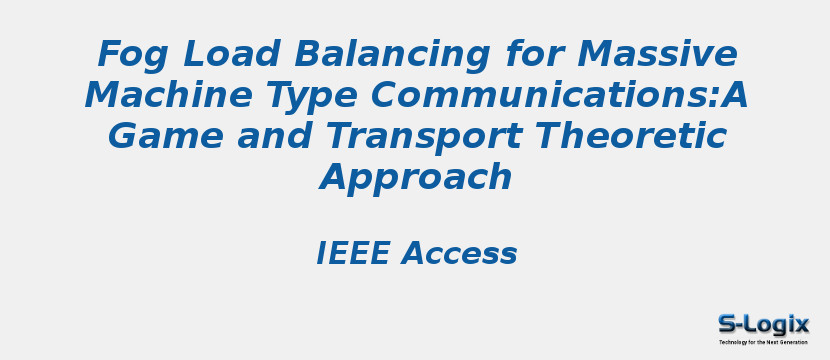Research Area: Fog Computing
The emerging fog computing and narrow-band Internet of Things (NB-IoT) wireless technologies are indispensable for the next-generation massive machine-type communication (mMTC) applications. However, the communication capacity of NB-IoT is limited compared with the ever-growing number of NB-IoT devices. Furthermore, the optimal assignment of different computational jobs ignites the issue of load balancing in the fog network to ensure a well-balanced computational resource allocation. Therefore, in this paper, we formulate a fog load balancing problem considering the communication and computation constraints, where the objective is to minimize the load balancing cost of the fog computing network empowered with the NB-IoT. First, we model the time resource scheduling problem in NB-IoT as a bankruptcy game. Within the game framework, we enforce the Shapley value-based strategic policy for the NB-IoT devices to perform uplink scheduling for mMTC applications while calculating the transmission costs of the computational jobs. We also propose greedy iterative time scheduling (GITS), complementary to the Shapley value-based scheduling but with less computational complexity. Second, we decompose the fog load balancing problem into a Hitchcock–Koopmans transportation problem that defines the overutilized and underutilized fog computing nodes based on the computational resource utilization. Subsequently, we solve the transportation problem by applying Vogel’s approximation method (VAM), which finds a feasible load balancing solution to ensure optimal job assignment in the fog computing network. The simulation results illustrate that the average job load balancing cost with our approach is significantly reduced compared with the baseline methods.
Keywords:
Author(s) Name: Sarder Fakhrul Abedin; Anupam Kumar Bairagi; Md. Shirajum Munir; Nguyen H. Tran; Choong Seon Hong
Journal name: IEEE Access
Conferrence name:
Publisher name: IEEE
DOI: 10.1109/ACCESS.2018.2888869
Volume Information: Volume: 7, Page(s): 4204 - 4218
